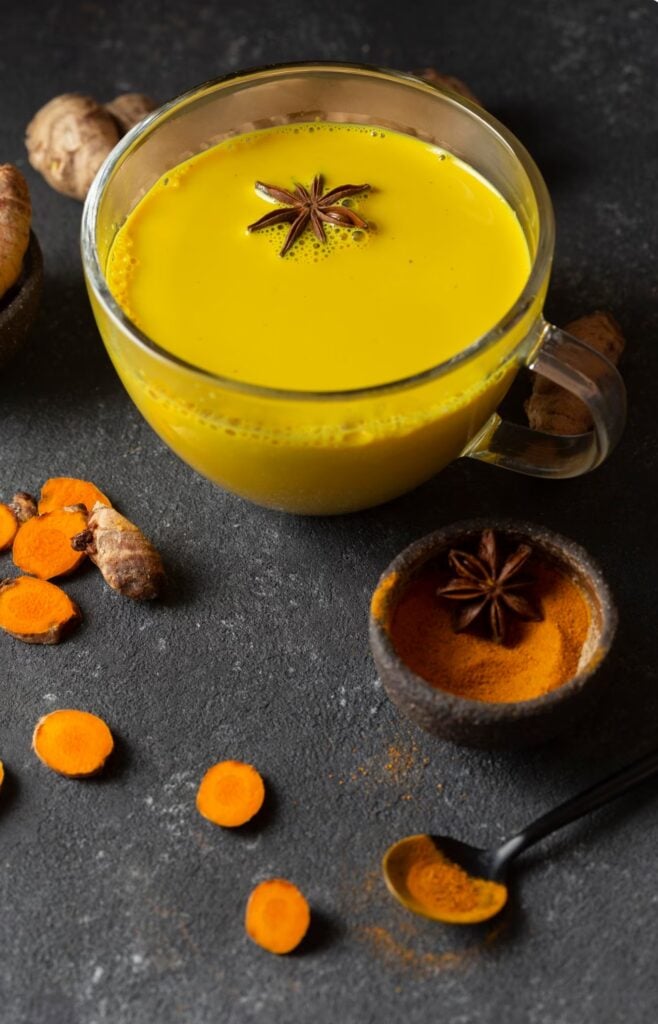Author: Dr. Yu Kang, LAc, RD
Date: October 2025
In traditional Chinese medicine, every food carries an energetic quality that influences the body’s internal balance. Dairy products are considered sweet in flavor and slightly cold in nature. They nourish Yin and fluids, but when overconsumed or taken cold, they can weaken the Spleen Yang, leading to the accumulation of Dampness (Ni, 2019).
Dampness refers to a state of stagnation—when the body’s transformation of fluids slows, resulting in heaviness, mucus, and sluggish digestion. In this context, it is not the dairy itself that generates mucus, but the cold nature of the food or the weakness of the individual’s Spleen Qi. Therefore, a person with an already cold constitution who drinks cold milk or eats ice cream may experience more phlegm and congestion.
Balancing Cold with Warm: The Role of Spices and Preparation
According to TCM principles, balance is achieved by harmonizing food energies. To offset dairy’s cold nature, one can warm it gently or combine it with warming spices, such as turmeric, cinnamon, cardamom, or ginger. These ingredients invigorate the Spleen Yang and promote the transformation of dampness (Flaws, 2020).
A modern example of this principle is golden milk, a traditional Ayurvedic and now widely popular beverage made with milk, turmeric, and warming spices. From a TCM viewpoint, this pairing transforms dairy from a potential source of dampness into a therapeutic, balancing tonic that supports digestion, nourishes Yin, and strengthens bones.
Modern Science: Calcium, Bones, and Public Health
While TCM emphasizes energetic balance, modern nutritional science highlights dairy’s essential role in supplying calcium, phosphorus, vitamin D, and high-quality protein, all critical for bone health. Despite these benefits, dietary data show that nearly 44% of Americans fail to meet their recommended calcium intake (U.S. Department of Agriculture & U.S. Department of Health and Human Services, 2020).
The consequences of this deficiency are significant. Among adults aged 50 years and older in the United States, 12.6% have osteoporosis at the femoral neck or lumbar spine—affecting 19.6% of women and 4.4% of men. Additionally, about 51.5% of women and 33.5% of men in this age group have low bone mass, which increases the risk of fractures (Centers for Disease Control and Prevention [CDC], 2021).
Fractures in older adults, particularly of the hip and spine, are among the leading causes of disability, loss of mobility, and depression (Johnell & Kanis, 2006). For this reason, ensuring sufficient calcium and protein intake throughout life—whether from dairy or well-planned alternatives—is a cornerstone of public health.
Integrating East and West: A Balanced Approach
Rather than viewing dairy as harmful, both traditions can agree that context and balance matter. From a TCM perspective, dairy becomes problematic only when consumed in ways that burden the Spleen—cold, raw, or in excess. From a Western nutritional standpoint, eliminating dairy without replacing its nutrients can have serious long-term consequences for bone integrity.
The most harmonious approach is therefore moderation and awareness:
Consume dairy warm, not cold.
Pair with warming spices like ginger or turmeric.
Include other Spleen-supporting foods such as cooked grains, root vegetables, and soups.
Maintain adequate calcium and vitamin D through diet or supplementation when necessary.
When these principles are combined, dairy can be both nourishing and balancing—supporting the body’s Yin while protecting against the degenerative changes that accompany aging.
Conclusion
Dairy does not inherently produce mucus; rather, its effect depends on the individual’s constitution and the manner in which it is consumed. Warm, spiced, and moderate use of dairy can support health without contributing to dampness. Meanwhile, ensuring adequate calcium intake remains vital for preventing osteoporosis and fractures, particularly in aging women. By integrating TCM principles of balance with modern nutritional science, one can enjoy dairy’s benefits while maintaining internal harmony and resilience.
References
Centers for Disease Control and Prevention. (2021). Osteoporosis or low bone mass in older adults: United States, 2017–2018. National Center for Health Statistics Data Brief No. 405. https://www.cdc.gov/nchs/products/databriefs/db405.htm
Flaws, B. (2020). The Tao of healthy eating: Dietary wisdom according to traditional Chinese medicine (2nd ed.). Blue Poppy Press.
Johnell, O., & Kanis, J. A. (2006). An estimate of the worldwide prevalence and disability associated with osteoporotic fractures. Osteoporosis International, 17(12), 1726–1733. https://doi.org/10.1007/s00198-006-0172-4
Ni, M. (2019). The yellow emperor’s classic of medicine: A new translation of the Neijing Suwen with commentary. Shambhala Publications.
U.S. Department of Agriculture, & U.S. Department of Health and Human Services. (2020). Dietary guidelines for Americans, 2020–2025 (9th ed.). https://www.dietaryguidelines.gov/

